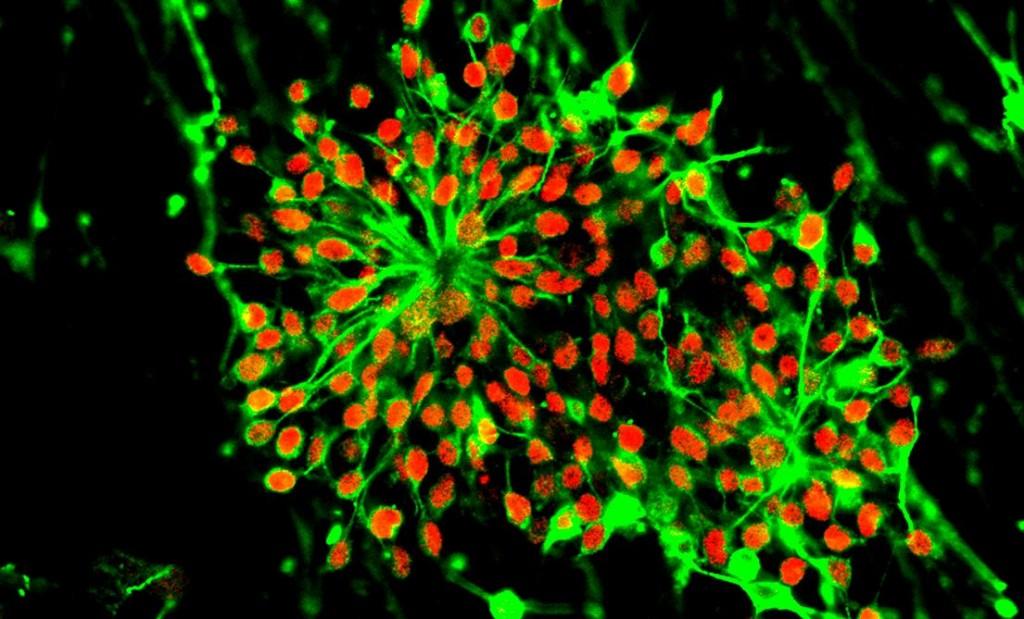Researchers in the Netherlands have taken a further step towards the goal of creating human body parts with 3D printers, by using stem cells.
While various scientists and researchers have experimented with the 3D bioprinting of human tissue, most of these have concentrated on a single type of cell, such as the printing of heart cells, as we reported on in March. However, researchers at Utrecht University in the Netherlands are experimenting with human stem cells.
Utrecht University is already leading the way in bioprinting, after replacing the entire top of a woman’s skull with a 3D printed plastic implant. However, by using stem cells, researchers hope to be able to create human body parts from living tissue, thanks to unique abilities of these stem cells.
Unlike most adult cells, which have a particular purpose such as a liver cells or heart cells, stem cells are at an early stage of development, so they can potentially turn into any type of cell in the human body.
Researchers hope that by using stem cells in bioprinting, they can one day be able to create any human organ or body part in the laboratory, helping to save the lives of patients needing transplants.
Just as with the printing of plastics or metals, stem cells are layered from the bottom up, so researchers hope they will be able to create entire organs, but the process is not without its difficulties.
Jos Malda, Biofabrication Researcher at Utrecht University, told the BBC:
“When you are printing metals and plastics there are high temperatures. There can be lasers involved and even organic solvents involved. We have to extract all this out of the bioprinting process, so we have to redesign the whole process. Therefore, we use an environment that is more like the human body, based predominately on water and at a temperature very close to body temperature.”
The process requires a specially designed bio-ink, made of living cells taken from patient biopsies and stem cells, and a layer of water based gel, which is used between each later of bio-ink. Using stem cells, researchers hope they will not only be able to create soft tissues and organs, but also some of the harder structures in the human body, such as bone or cartilage.
“We combine strong bio materials, degradable plastics that have been approved for medical use and we integrate them in our printing process and therefore you get something that is like reinforced concrete,” added Jos Malda.
Discuss this article, and its ramifications in the ‘3D printing of body parts’ thread on 3DPB.com
Subscribe to Our Email Newsletter
Stay up-to-date on all the latest news from the 3D printing industry and receive information and offers from third party vendors.
You May Also Like
3D Printing Webinar and Event Roundup: May 5, 2024
We’ve got a busy week of 3D printing events ahead of us, in Texas, Florida, Washington, D.C., Shanghai, and more. Webinar offerings will cover medical models, PolyJet 3D printing, additive...
High Stakes, High Speed: KVG Acquires 15 Nexa3D HSE 3D Printers to Boost Military Tech
As 3D printing increasingly intersects with defense and military logistics, a new partnership between Nexa3D and mission support logistics firm KVG stresses the growing importance of this technology in strategic...
Construction 3D Printing CEO Reflects on Being Female in Construction
Natalie Wadley, CEO of ChangeMaker3D, could hear the words of her daughter sitting next to her resounding in her head. “Mum, MUM, you’ve won!” Wadley had just won the prestigious...
3D Printing News Briefs, February 17, 2024: Shot Blasting, Service Bureaus, & More
In today’s 3D Printing News Briefs, we’re starting out with post-processing, as SKZ Würzburg is using a shot blast system from AM Solutions for its research. Moving on to business,...


































